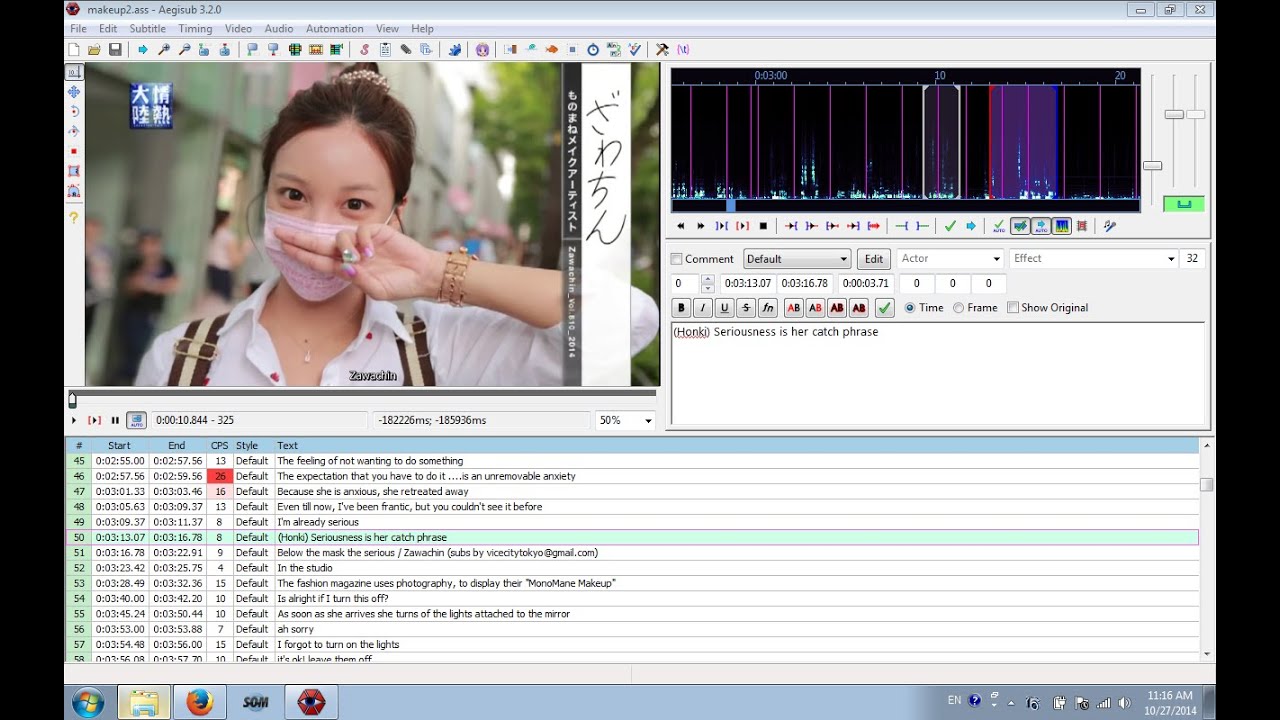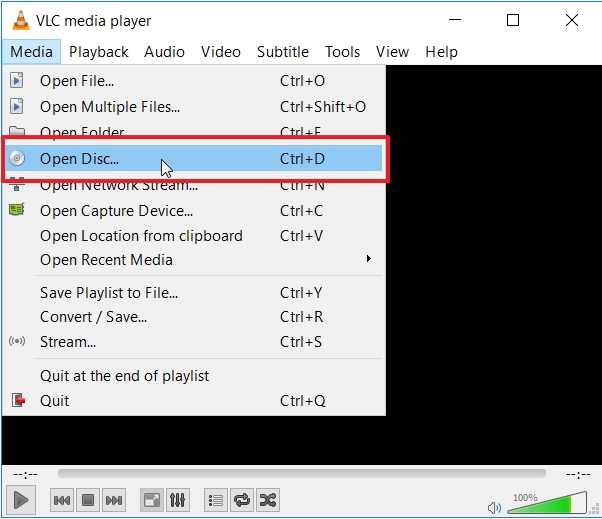- Ffmpeg Burn In Subtitles
- Ffmpeg Extract Subtitles From Ts
- Extract Dvd Subtitles From Ffmpeg
- Ffmpeg Extract Srt
Finally giving up on ffmpeg, I asked the search engine if any other tools were able to extract image-based subtitles as rendered images/pictures from the video. Some claimed mencoder could do that and I actually found example commands, but none worked for me and all examples centered around DVD and VobSub format type of work, like writing.idx. To extract more subtitles at once you have to duplicate the -map parameters for each file. Also include -c copy so that it just extracts the file without trying to process it: ffmpeg -i Movie.mkv -c copy -map 0:s:0 subs.01.srt -c copy -map 0:s:1 subs.02.srt. Anyway it will take long time because ffmpeg must read whole video file to find all.
subs in vobfiles are actually a video-stream, but .srt is a text-format - even ffmpeg cannot transcode this. for ffmpeg to detect the subtitle-stream in a vobfile analyzeduration has to be set extremely high, but even then it sometimes does not work.to generate a textfile from the video stream i use the following steps (it's been a long time but this should still work):
1. extract the subtitle-videostream of sid 0 with mencoder:
| Code: |
| mencoder <VOBFILE> -nosound -ovc frameno -o /dev/null -vobsuboutindex 0 -sid 0 -vobsubout <SUBFILE> |
this should generate <SUBFILE>.sub and <SUBFILE>.idx.
2. then convert the video- and index-files to image-files (eg .tiff) with subp2tiff (included in media-video/ogmrip)
| Code: |
| subp2tiff <SUBFILE> |
this generates a lot of small image-files and <SUBFILE>.xml.
3. use OCR to convert the imagefiles to textfiles, i use app-text/tesseract.
a loop over all <SUBFILE>-nnnn.tiff creates <SUBFILE>-nnnn.tiff.txt
eg
| Code: |
| for i in $(ls *.tif); do tesseract -l <LANGUAGE> $i $i; done |
you have to set <LANGUAGE> to one of tesseracts language-codes or OCR will not work.
4. create final .srt-file with subptools (also from media-video/ogmrip)
Ffmpeg Burn In Subtitles
| Code: |
| subptools -s -t srt -n lf -i <SUBFILE>.xml -o <SUBFILE>.srt |
these steps are quite easily scriptable.
before you mux the .srt-file into your mkv you can change/correct/... it.
to find the SIDs i am interested in i use midentify from mplayer which in this case i think is more flexible than ffmpeg; it works with iso-files, dvd-dirs and vobfiles.
You can also use the ogmrip-gui which basically does the same things but i think it forces you into 'full-auto' mode and has no option to only extract and convert the subs.
GOOD LUCK!
_________________
DUMM KLICKT GUT.

I have a collection of DVDs I need to put in storage to clear up some space. This page lists what I have learned about how to take DVD video and create a video file as a result.
There are many other articles on the subject, such as this one.
A DVD usually has two directories on it, AUDIO_TS and VIDEO_TS. For DVD videos we only care about the VIDEO_TS directory.
Inside the VIDEO_TS directory there are a collection of files, e.g.:
We’re only interested in *.VOB files, and generally anything after VTS_02_* as VTS_01_* is usually the contents page for the DVD.
So, we want to make a video out of the VTS_02_*.VOB files. Before we can proceed any further it is necessary for us to make a single, continuous .mpeg file. Be warned, however, this file will be large (3 gigabytes for 45 minutes).
Thus we want to have an input file that is a concatenation of the VOB files, in order. We use the input file type of concat:file_1:file_2:…
Again, before we proceed further, we need to find out what streams are in the source video:
Ffmpeg Extract Subtitles From Ts
Now, when we create our intermediate (temporary) .mpeg file, we need to specify which streams we want to extract. By default ffmpeg only extracts the best video and best audio stream it can find. If we want to keep all our audio streams then we have to explicitly tell ffmpeg this using the -map directive, one per stream we want to keep, in order.
In this case I want to keep streams 0:1 (video), 0:3 (5.1 audio), and 0:4 (audio stereo). But actually I want the stereo track to come before the 5.1 audio, so I’ll use the following command to make my intermediate file:
So now we have an intermediate file. It is from this we can create the desired output.
You might have an encrypted region-specific DVD. In this case the ffmpeg tool will not work by itself. A tool that will read encrypted DVDs is a port of ffmpeg called vgtmpeg. There are Windows and Linux builds available. This uses the same command line except for the input you specify an input of something like:
Note that region-coded DVDs will not work in a DVD drive that has no region code set (some new drives have no code initially configured). In Linux you can set a drive’s region code (a maximum of 5 times) using the command-line tool regionset. Once the drive’s region has been set, however, the vgtmpeg tool should work with a drive from any region even if it is different from the drive’s specified region.
Now you can compress the intermediate file.
You will probably want to tinker with the settings to suit your preferences.
Extract Dvd Subtitles From Ffmpeg
First you have to specify which streams you want to encode, again. You may be forced to specify the display aspect ratio. And you may wish to add metadata (descriptions) to the audio channels (and subtitles if you use them).
Here are some settings for an example:
The -map directives select what streams we want from our input file.
The -c:v libx264 directive selects the video codec. The -preset option chooses an H.264 encoding speed to compression ratio. The -b:v option specifies a constant output bitrate (you can use two-pass encoding if you wish to utilise a different strategy). The -aspect 16:9 may not be necessary but forces the default display by the client reading the file later. The -strict -2 options are required for H.264 encoding. The -g 50 option makes the encoder store a whole image frame every 50 frames (useful for being able to forward or reverse into the video). The -vf yadif video filter de-interlaces the source video.

The -c:a:0 option sets the audio codec on the first audio stream (which is different from the stream number assigned). The -b:a:0 option sets the bit rate for the first audio stream. And the -metadata:s:a:0 option sets a title for the stream, which can make it easier for those watching your video to choose an appropriate named audio track rather than guessing what the difference is.
Finally the output file name is specified.
Audio
A guide to high quality audio with ffmpeg is documented on the ffmpeg wiki.
A 5.1 stream is perhaps better encoded using the “ac3” (Dolby Digital) codec.
If you want to convert a 5.1 stream to stereo you can use the following to select a particular audio stream and apply a filter to it:
Ffmpeg Extract Srt


Subtitles
DVD subtitles may not appear in the first VOB file in a set; it may be necessary to tell ffmpeg to scan ahead deep into the file so that it can find the subtitles in the second VOB file. The directives to do this are -probesize and -analyzeduration – the first being the number of bytes to read ahead into the file, and the second being the number of microseconds (of which there are 1,000,000 per second). These directives must come before the input file directive.
So, to scan ahead 4GB and 1 hour, the an example command may be:
You can specify a title to go along with a subtitle track, such as: